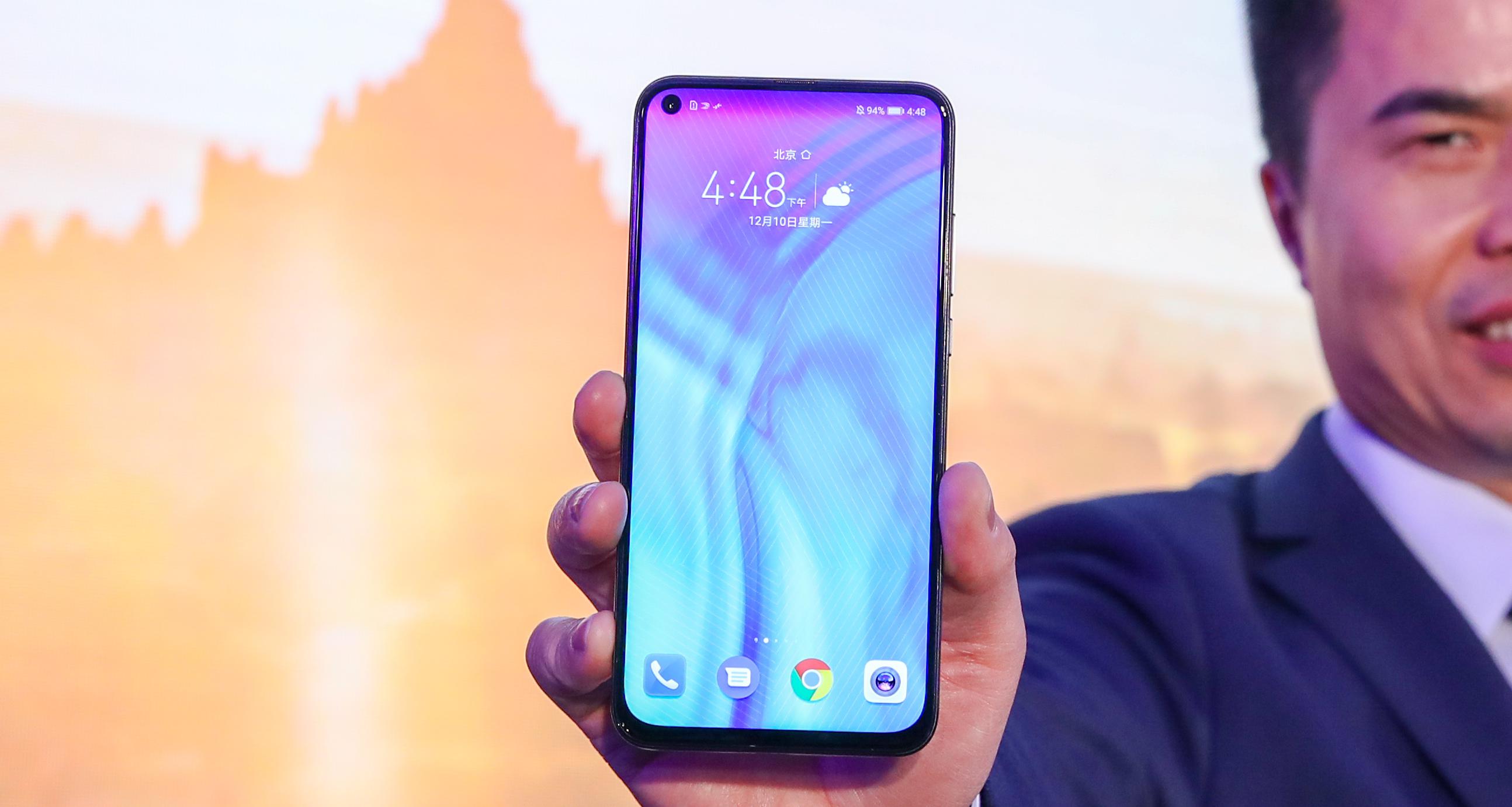At 9:30 AM local time, we kick off TechCrunch Startup Battlefield Africa, where 15 companies will take the stage, along with panels from industry investors, Main One, and speakers from Facebook (our partner on the event through the FB Start program).
If you can’t be here with us in Lagos, Nigeria, we’ve got you covered. Check back on TechCrunch later today, to watch videos of the pitches, panelsand the competition winner.
TechCrunch is back in Sub-Saharan Africa for the second time. Last year, we held our first ever Startup Battlefield in Nairobi, Kenya. African startups impressed us with their innovative solutions and effective business models, so we had to come back and find even more impressive companies from across the continent. TechCrunch reviews several hundred startups from across the region, selecting the top 15 companies to compete on stage for a $25,000 equity-free grand prize, a trip for two to TechCrunch Disrupt San Francisco 2019, and the coveted title of “Africa’s Favorite Startup.”
Founders have spent the past several weeks receiving intensive coaching from the TechCrunch team, refining their pitches, business models, and honing their presentation skills. For each of the three semi-final rounds, teams will pitch for six minutes, with a live demo, followed by a rigorous Q&A with our panel of expert judges. After judge deliberations, only five companies will make it to the Startup Battlefield Finals. Teams will compete with the same pitch but a more intensive Q&A with new judges.
So, who are the top 15 companies? These companies are breaking barriers in a variety of industries. Let’s take a look:
Stay tuned for videos on TechCrunch.com after the event.
Session 1: 9:35am – 10:40am
Apollo Agriculture: Leverages advances in machine learning, remote imaging via satellite, and mobile money to deliver input finance and agronomic advice to smallholder farmers with radical efficiency and scalability.
Sud-pay: Developed an integrated, multi-support, multi-service, and multi-operator digital tax collection platform that connects merchants to financial institutions.
LabTech,: UriSAF by LabTECH is a urine testing hardware and software solution designed to speed up the diagnosis of Uterine Tract Infections (UTIs).
Complete Farmer: A “crowdfarming” platform that enables users to invest in sustainable farms and monitor farming activities without discarding their daily routine using data driven cultivation protocols and IoT enabled precision farming.
Bettr: A virtual banking experience powered by the smartphone and your data.
Session 2: 11:40am – 12:40pm
FoodHubs: Uses mobile solar powered cold carts and cold rooms to help smallholders farmers store their produce, so as to avoid post harvest losses.
Honey Flow Africa: Optimizes beekeeping operations by digitizing and bringing the power of IoT to the bee keeping process to improve honey production, processing and predictability.
AgriPredict: Provide farmers with tools that equip them with information that will improve predicting disease, pest infestations, and extreme weather conditions
MAX: Transforms moto-taxi mobility in Africa using mobile apps, inclusive data-driven asset-finance, and a comprehensive driver on-boarding program that uses machine learning and psychometric tests to profile drivers and create credit scores for them. MAX enables financial inclusion for drivers, prioritizes safety, and uses IoT technology to track all drivers in real-time.
CodeLn: An end-to-end technical recruitment platform that automates the entire recruitment process, making it fast and easy for companies to find and test Software Developers and reduce the risk of bad hires.
Session 3: 1:40pm – 2:40pm
Bankly: An innovative financial product focused on reaching the unbanked in Africa, in a “Recharge to Save” model. Bankly developed a cash-digitization payment and savings products, in which users pay using Bankly vouchers.
Powerstove Energy: The world’s first clean cookstove with built-in self-powered IoT System for real time monitoring. Its 100 percent smokeless biomass cookstove cooks food times faster and burns 70 times less of processed proprietary water-resistant Goodlife Biomass Pellets produced from forest and agricultural waste.
M-SCAN: Develops portable mobile ultrasound devices (Ultrasonic probes) that are laptop, tablet and mobile phone compatible.
Pineapple: A fully decentralized insurer. With Pineapple, members pay premiums into their own wallets rather than a central pot. When claims occur, they are distributed to all wallets in the community, which collectively help pay for the claim.
Trend Solar: Assimilated a 4G Android Smartphone and Solar Home System to provide affordable access to energy, internet, and mobile in an all-in-one solution that seeks to address the needs of 640 million+ people currently living off-grid in Sub-Saharan Africa.
Startup Battlefield Finals: 3:40pm – 4:55pm
_________________________________________________
9:30 am – 9:35 am: Welcome Remarks from Brian Heater (TechCrunch)
9:35 am – 10:40 am: Startup Battlefield – Session 1
TechCrunch’s iconic startup competition is back in Africa! Watch as entrepreneurs from around the region pitch expert judges and vie for the Battlefield Cup. The first preliminary round of five contestants.
10:40 am – 11:05 am: Expats, Repats and Africans with Kwame Acheampong (Mall for Africa), Eleni Gabre-Madhin (blueMoon) and Lexi Novitske (Singularity Investments)
Africa’s tech sector is reshaping the movement of people, investment, and talent between the continent and the world. But what are the pros and cons of repatriates returning to launch companies, expats choosing Africa’s tech scene over others, and VCs deploying greater capital to region?
11:05 am – 11:20 am: Break
11:20 am – 11:40 am: Keynote by Konstantinos Papamiltiadis (Facebook)
Facebook’s Director of Platform Partnerships discusses the Facebook developer ecosystem. Sponsored by Facebook.
11:40 am – 12:40 pm: Startup Battlefield – Session 2
TechCrunch’s iconic startup competition is back in Africa! Watch as entrepreneurs from around the region pitch expert judges and vie for the Battlefield Cup. The second preliminary round of five contestants.
12:40 pm – 1:40 pm: Break
1:00 pm – 1:45 pm: SPONSORED SESSION: Transforming the Agriculture Value Chain with AI, Blockchain, IoT and Weather Data by IBM (Workshop Room)
Transforming the agriculture value chain is a top priority for African governments and the private sector. Unfortunately, a plethora of challenges plague the agriculture value chain ranging from cultivation to retail. In addition, the value chain is highly fragmented with limited visibility and ineffective coordination across the various parties, participants and value added partners. IBM Research – Africa and Hello Tractor will present their solution to address this challenge.
1:40 pm – 2:40 pm: Startup Battlefield – Session 3
TechCrunch’s iconic startup competition is back in Africa! Watch as entrepreneurs from around the region pitch expert judges and vie for the Battlefield Cup. The third preliminary round of five contestants.
2:40 pm – 3:00 pm: Fireside Chat with Funke Opeke (Main One)
Dubbed the person responsible for powering broadband across all of West Africa, Funke Opeke has become one of the most well-known people in the African tech community. MainOne, a telecoms company Opeke leads as CEO, is responsible for driving internet use across West Africa by investing in digital infrastructures. In this fireside chat, we will what’s next and how to equip entrepreneurs with the necessary resources to build scalable businesses.
3:00 pm – 3:25 pm: Investing in African Startups with Kola Aina (Ventures Platform) and Omobola Johnson (TLcom Capital)
Discussing the unique landscape of the African startup ecosystem and what can be learned from Silicon Valley’s approach to venture capital.
3:00 pm – 3:45 am: SPONSORED SESSION: A Perspective on Innovation In Africa – by Microsoft (Workshop Room)
Enabling the technology startup ecosystem in Africa is a priority of Microsoft’s. We are working to building the necessary infrastructure, partnerships and programs to support tech innovators from all across Africa. We believe in empowering everyone on the planet to do more – Microsoft will do an overview of how your startup can leverage the investments we have in place for startups.
3:25 pm – 3:40 pm: Break
3:40 pm – 4:55 pm: Startup Battlefield Final
The final round. One of these five finalists will be the winner of Startup Battlefield.
4:55 pm – 5:15 pm: Building at Scale (Facebook)
Taking an Idea and Delivering Cross Border Success with Emeka Afigbo (Facebook), Kofi Dadzie (Rancard) – Sponsored by Facebook
5:15 pm – 5:40 pm: Blockchain’s Potential in Africa with Olugbenga Agboola (Flutterwave), Omolara Awoyemi (SureGroup) and Nichole Yembra (Greenhouse Capital) and Olaoluwa Samuel-Biyi (SureRemit)
As crypto fever gripped many leading economies in 2018, Africa was shaping its own blockchain narrative—one more grounded in utility than speculation. Over the last year, the continent saw several ICOs and token launches. And use cases for blockchain in Africa are emerging to solve problems and unlock potential in agriculture, solar-energy, health-care, government and beyond.
5:40 pm – 6:00 pm: Startup Battlefield Closing Awards Ceremony
Watch the announcement of the Startup Battlefield winner.
6:30 pm – 8:00 pm: Startup Battlefield Africa After Party sponsored by Mall for Africa. All attendees are invited to join TechCrunch for the official Startup Battlefield Africa After Party.







